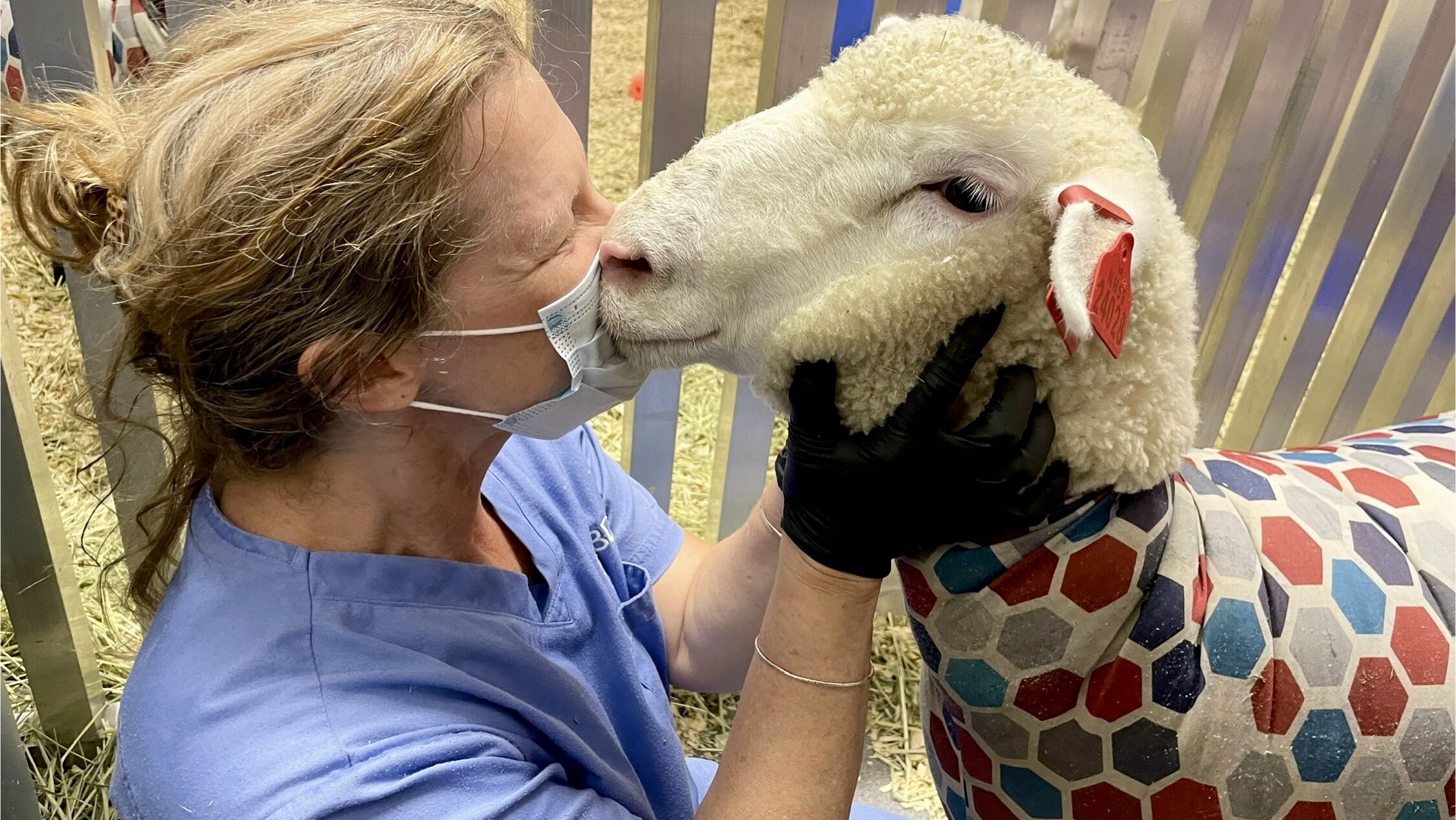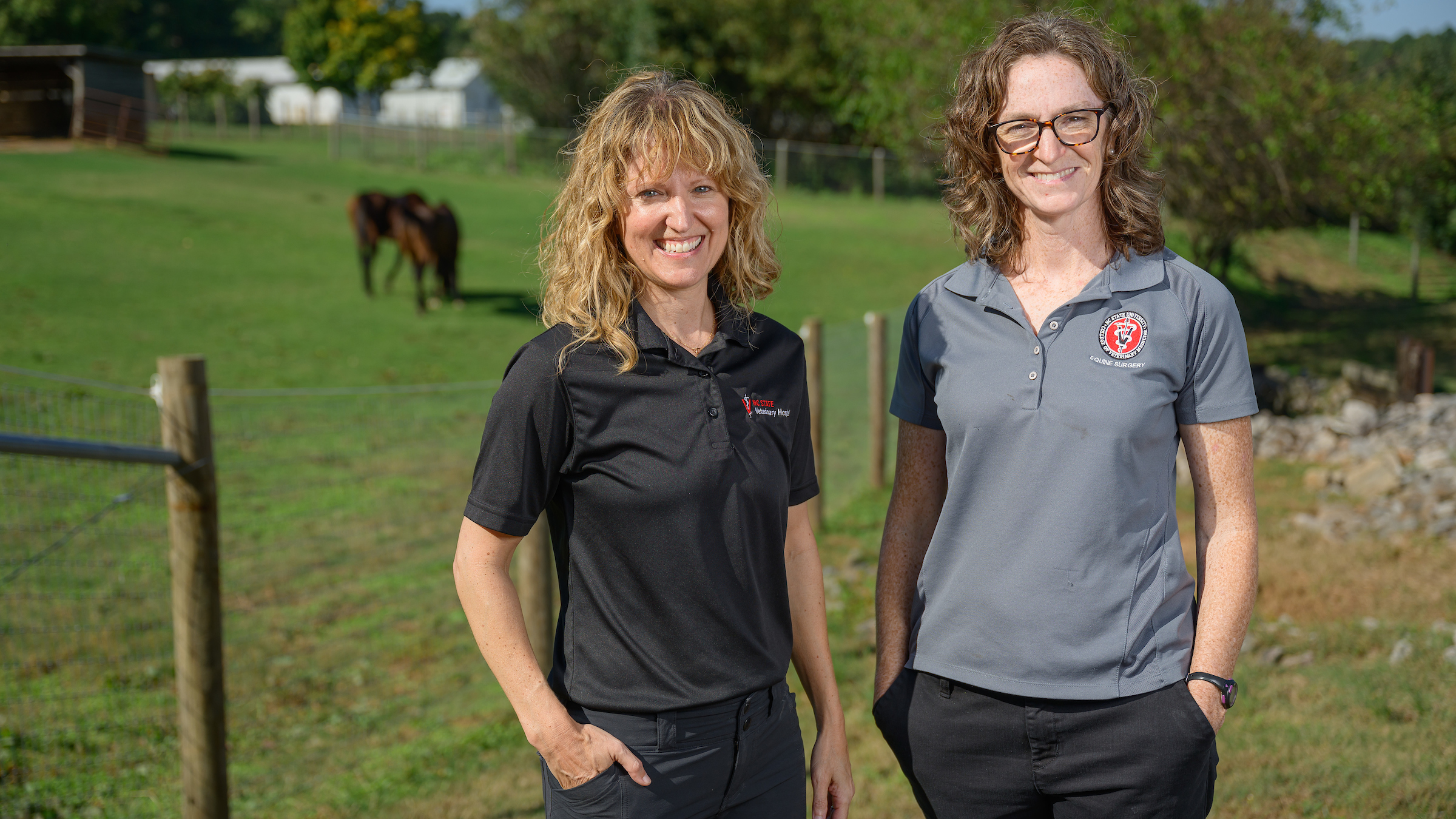At NC State Veterinary Hospital’s Blood Bank, Life-Savers in Reserve

Not long after 12-year-old springer spaniel Gracie nearly bled to death, she met one of the dogs who saved her life.
He’s a golden retriever named Rafferty, owned by Beth Fox, a technician in the NC State Veterinary Hospital’s intensive care unit. Gracie was brought there for treatment when she started coughing up blood. It was later determined that she had ingested rat poison while visiting a farm with her owner, Ran Johnston.
Rafferty is one of six dogs who donated the plasma, stored in the NC State Veterinary Hospital’s small animal blood bank, that Gracie received after blood had built up around her lungs and her heart.
Gracie needed a rapid transfusion of enough plasma to restore clotting agents to her blood; the rat poison had lowered her platelet count. Without the emergency room treatment — and Rafferty’s plasma — her internal bleeding would have been fatal.

Twelve hours after the transfusion, coagulation properties in Gracie’s blood were back to normal. She remained in the hospital for two more days, speedily improving the entire time. When Gracie and her owner, Joan Johnston, recently returned to the hospital, it was to meet Rafferty.
“It was a shock,” she said. “We were crying because we weren’t sure she was going to make it. But when it turned out all right, we were overwhelmed with joy.”
The Johnstons had come to the right place. NC State has the most extensive veterinary hospital blood bank in the region. A robust donor program supports the canine blood bank that works with a group of around 60 donors at a time, said Sarah Musulin, director of the hospital’s emergency service and its blood bank. The hospital also has a well-stocked feline blood bank.
Patients from throughout North Carolina and surrounding states are often referred to the hospital for treatment because of its blood bank. The hospital’s careful disease screening processes assures a safe and reliable supply of both blood and plasma. Volunteer canine donors are between 1 and 5 years old, at least 50 pounds and donate blood one time every two months for two years. The donation process takes less than one hour.
Musulin credits Alicia Ossi, a medical support technician and the blood bank’s coordinator, with operating an efficient and effective program.

“It makes a great difference in an emergency when you can quickly access the life-saving transfusion product that you need,” said Musulin, who was the senior clinician on duty when Gracie arrived at the hospital.
Having a blood bank around the corner was vital for Gracie. It was necessary to quickly — and carefully — thaw the plasma she would receive, since it needs to be frozen to be stored. Gracie also received vitamin K to stop hemorrhages, as well as a packed red blood cell transfusion to restore all the blood she had lost.
“Her condition was critical,” said Jessica Kielb, an emergency and critical care resident who first connected Gracie’s condition to ingesting rodenticide. “Gracie would have died in a few hours.”
And the Johnstons would have suddenly been without a steadfast companion. Gracie is particularly close with Ran Johnston. Most of their time is spent together in Ran’s truck as he runs his landscaping business. They go to work together, they go hunting together. They hang out in the way only best friends do. The outlook now is for a full recovery — and many more truck rides.
“It’s strange,” said Joan Johnston, “but she seems even better than she was before this happened.
For more information on the NC State Veterinary Hospital’s small animal service blood bank, go here.
~Steve Volstad/NC State Veterinary Medicine
- Categories:


